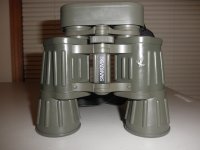I think you know the answer. Deep down, what do want people to say? "Go for it", or "keep your SLC"?
I bought a 10x42 NL, and while it's an optically brilliant bino, the novelty has already worn off (it's been about 3 weeks). I think it's easy to fall into the trap of thinking that an object will dramatically alter your quality of life, or that minute optical improvements will change the way you go about your birding/hunting/nature watching - whatever.
The NL's are good tools. But they're not magical 'wonder' instruments, either. If you've got the $$ and you feel that the extra features of the NL may contribute to your enjoyment, why not? But I don't think you'd be missing out on much by sticking with your SLC's.
At the end of the day, it's what you view through your binos that counts, isn't it? This forum has been a bit of a negative influence, because instead of enjoying whatever it is I'm looking at, I've been preoccupied with nitpicking the glass instead. And even the NL isn't immune to that. I've been picking holes in it all day long, and it sucks big time.
The grass is always greener. If you think the NL will cure that, then you're wrong.
If you find the SLC to be fantastic, then why change? If your answer to that is "but...." (etc) - then buy the NL's. :0)








